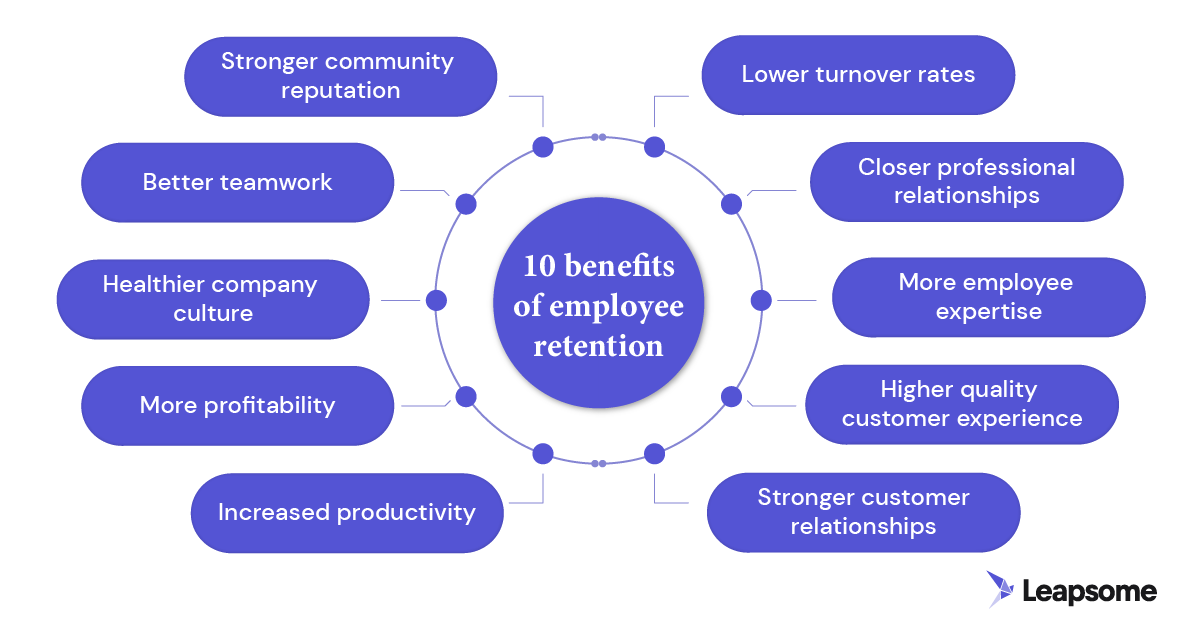Investing In Middle Management: A Strategy For Enhanced Productivity And Employee Retention

Table of Contents
The Critical Role of Middle Management in Productivity
Middle managers are the backbone of any successful organization. They act as the crucial link between upper leadership and frontline employees, directly impacting daily operations and overall organizational success.
Bridging the Gap Between Leadership and Employees: Effective middle management is essential for translating high-level strategic goals into actionable tasks for individual teams. They ensure clear communication flows both upwards and downwards, preventing misunderstandings and bottlenecks.
- Communication breakdowns: Lack of clear direction, inconsistent messaging, and delayed feedback all lead to decreased productivity and employee frustration.
- Effective communication: Regular team meetings, transparent communication channels, and clear delegation of tasks ensure everyone is aligned and working efficiently.
Fostering a Culture of Accountability and Performance: Middle managers play a vital role in setting clear expectations, providing regular feedback, and monitoring team performance.
- Performance management strategies: Implementing SMART goals (Specific, Measurable, Achievable, Relevant, Time-bound), regular check-ins, and constructive performance reviews are crucial.
- Constructive feedback: Regular feedback, both positive and constructive, is essential for motivating employees and helping them improve.
Optimizing Processes and Resource Allocation: Middle managers are often best positioned to identify inefficiencies and bottlenecks within their teams. They can streamline workflows, optimize resource utilization, and implement process improvements.
- Process improvement initiatives: Lean methodologies, Six Sigma principles, and Kaizen events are examples of initiatives that effective middle managers can lead.
- Tools and techniques: Utilizing project management software, workflow automation tools, and data analytics can significantly enhance efficiency.
Investing in Middle Management: Training and Development
Investing in your middle managers is not just about paying them well; it's about providing them with the tools and skills necessary to excel in their roles.
Leadership and Management Skills Training: Targeted training programs focusing on crucial skills are paramount.
- Beneficial training programs: Workshops on communication, delegation, conflict resolution, performance management, and emotional intelligence are highly beneficial.
- ROI of management training: Investing in training leads to better management, increased productivity, improved employee morale, and reduced turnover – all of which represent a significant return on investment.
Mentorship and Coaching Programs: Pairing experienced managers with newer ones provides valuable support and guidance.
- Successful mentorship examples: Formal mentorship programs, peer-to-peer coaching, and shadowing opportunities all facilitate knowledge transfer and skill development.
- Improved employee retention and performance: Mentorship fosters a culture of support and development, improving both employee retention and overall performance.
Empowerment and Delegation: Empowering middle managers to make decisions and take ownership increases their engagement and effectiveness.
- Effective delegation and trust-building: Clearly defining roles and responsibilities, providing the necessary autonomy, and fostering a culture of trust are essential.
- Positive impact of empowerment: Empowered employees feel valued, more motivated, and more likely to take initiative, contributing to increased productivity and improved morale.
The Link Between Middle Management Investment and Employee Retention
Investing in middle management has a direct and positive impact on employee retention.
Improved Employee Engagement and Morale: Supportive middle managers are crucial for fostering a positive work environment.
- Reduced stress and burnout: Effective managers understand employee needs and create a supportive environment that reduces stress and burnout.
- Positive work environment: Open communication, recognition of achievements, and a culture of respect contribute to employee happiness and engagement.
Reduced Turnover and Increased Employee Loyalty: Strong middle management is directly correlated with lower employee turnover rates.
- Turnover costs: The costs associated with replacing employees – recruiting, training, and lost productivity – are significant. Reducing turnover translates directly to cost savings.
- Fostering employee loyalty: A supportive and development-oriented environment fosters employee loyalty and commitment to the organization.
Attracting and Retaining Top Talent: Companies with strong middle management are more attractive to potential employees.
- Improved employer brand: Investing in employees shows that the company values its people, enhancing its employer brand and attracting top talent.
- Development opportunities: Providing opportunities for growth and development makes the company a more desirable place to work, attracting and retaining skilled professionals.
Conclusion
Investing in middle management is not an expense; it's a strategic investment that yields significant returns in increased productivity and improved employee retention. By focusing on training, development, and empowerment, organizations can cultivate a highly effective middle management team that drives success. Strengthen your middle management, develop your middle management team, and invest wisely in your middle management to achieve a more engaged, productive, and loyal workforce.

Featured Posts
-
 Unprecedented Feat Two Celtics Players Score 40 Points In Same Game
May 11, 2025
Unprecedented Feat Two Celtics Players Score 40 Points In Same Game
May 11, 2025 -
 Did Selena Gomez Cheat With Benny Blanco The Singer Responds To Speculation
May 11, 2025
Did Selena Gomez Cheat With Benny Blanco The Singer Responds To Speculation
May 11, 2025 -
 Sylvester Stallones Favorite Rocky Movie The Most Emotional Entry In The Franchise
May 11, 2025
Sylvester Stallones Favorite Rocky Movie The Most Emotional Entry In The Franchise
May 11, 2025 -
 Ryujinx Switch Emulator Project Ends After Reported Nintendo Intervention
May 11, 2025
Ryujinx Switch Emulator Project Ends After Reported Nintendo Intervention
May 11, 2025 -
 The China Factor Analyzing The Market Pressures On Premium Auto Brands
May 11, 2025
The China Factor Analyzing The Market Pressures On Premium Auto Brands
May 11, 2025
